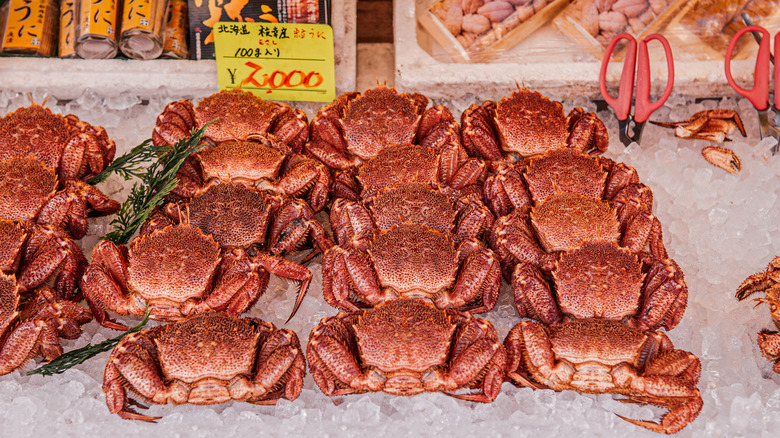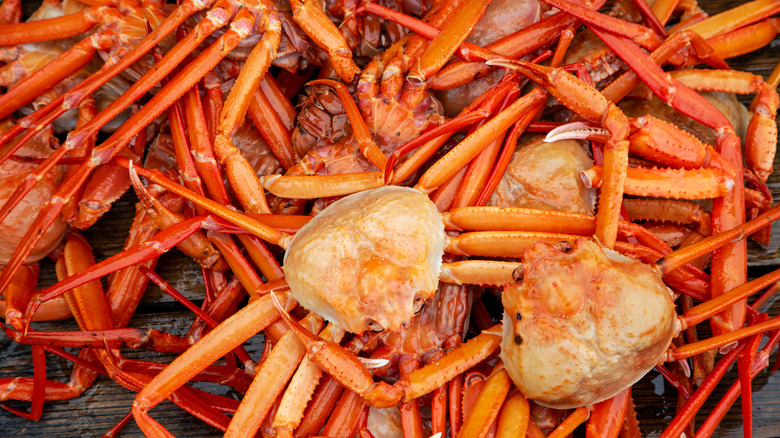How To Know You're Picking The Best Crab At The Seafood Counter
Sometimes, the most intimidating part of preparing a meal isn't the cooking process. Try arriving at the grocery store, ingredient list in hand, where the star of your meal is behind the counter snapping its pincers.
Crab is a seafood delicacy that you can cook in a myriad of ways. Whether you broil, boil, or choose to steam for a classic Maryland crab feast, the crab that you have on hand matters just as much as your technique. Choose between king, snow, blue, rock crab, and more for salads, main courses, bisques and, of course, crab cakes. The options are truly limitless, but if you're cooking for quality, you'll want to distinguish the best crab from its friends of lesser taste and value.
But we're not comparing crab varieties — we're concerned with what to look out for when you're purchasing the crustaceans. With so many options even among the raw crabs at the seafood counter, it's easy to get overwhelmed and lost. A great meal starts with the best ingredients, especially when it comes to seafood.
Don't add these crabs to your cart
When it comes to quality meat, whether you pick beef, poultry or seafood, there's no arguing that fresh is best. Quality Seafood Delivery suggests that you purchase crabs from a local vendor whenever possible. But even if you live hundreds of miles inland from the coast, there are a few ways to tell the best crabs apart from the rest of the lot.
According to Epicurious, you want to avoid dead crabs; if it's not moving, don't buy it. Bacteria and enzymes get to work quickly after a crab dies, breaking down proteins. As a result, raw meat from a dead crab will turn mushy fast and taste off, far beyond the help of Old Bay Seasoning. If available, opt for crabs that move.
If you're instead buying crab meat that's been cooked and processed, pay close attention to the color of the meat. It should be white — any discolored spots should be carefully inspected. Often, blue or gray patches in the flesh indicate a frozen crab that wasn't stored properly, or old crab meat that's starting to go bad (via Eat By Date). If the crab meat is accompanied by a funky scent and is slimy in texture, you can assume it's spoiled and shouldn't serve it.

